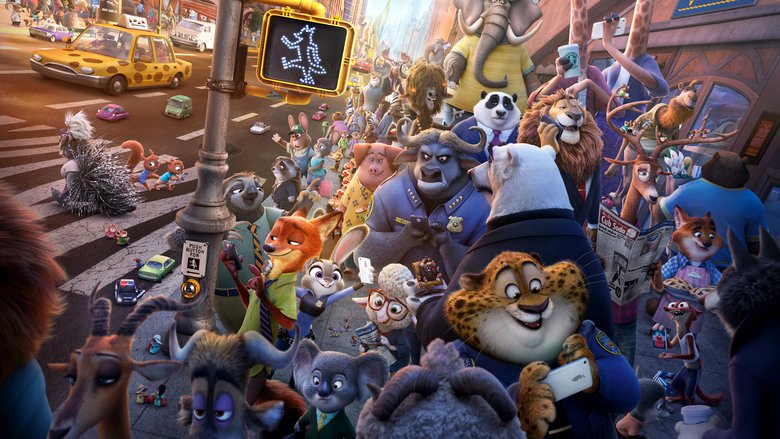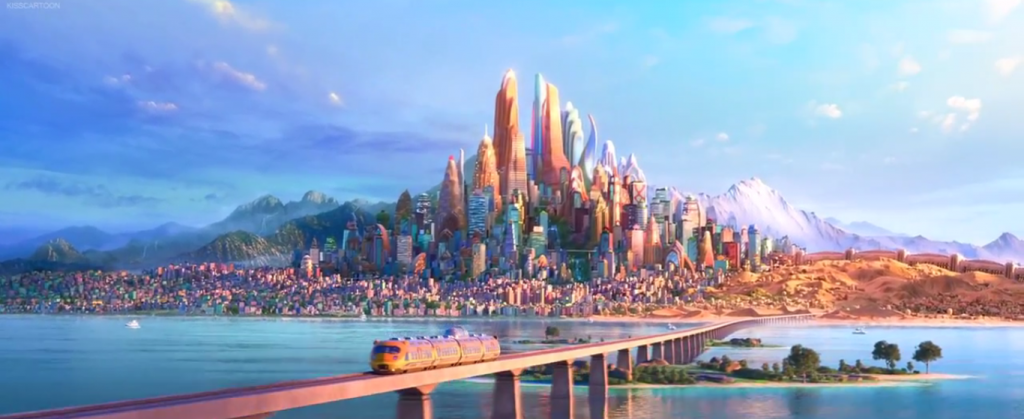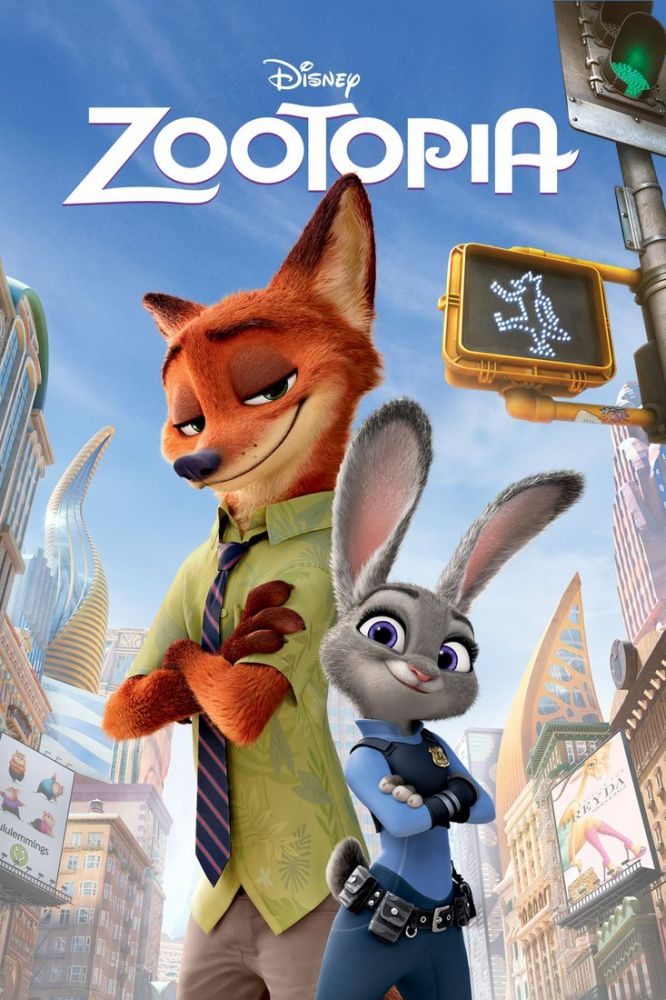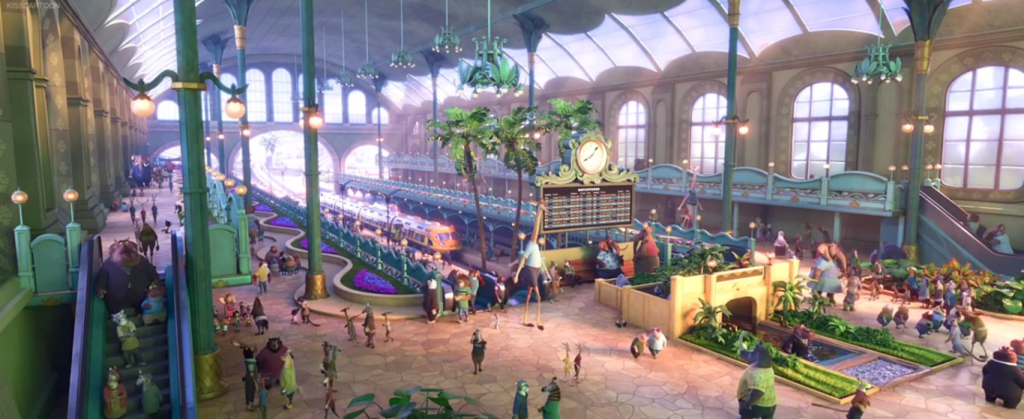Zootopia [1] presents a story about the first rabbit police officer teaming up with a fox confidence trickster to stop their city descending into anarchy. The film is a modern take on a classic animal fable, using Aesopian tropes of animals representing certain personalities alongside a technology rich, modern setting.
An example which helps us understand the film’s relationship with animals is the scene where Judy Hopps finally arrives in Zootopia. The scene shows us a sweeping, dynamic tour through the various environs of Zootopia until finally arriving in the heart of the city; this establishing our diverse animal metropolis setting. Throughout we are shown the interplay between the typically wild and typically human aspects of its characters, as is the nature of anthropomorphism. The vast diversity of Zootopia’s environs requires great feats of technology to maintain. The scene shows the technological details of the city from networks of sprinkler systems, to great temperature regulating walls; this showing the city’s reliance on technology. However, their cityscape distinctly incorporates nature, containing deserts and rainforests. Indeed, even their more traditional cityscape is brightly coloured; their buildings having more naturalistic shapes and curves. Zootopia is presented as a city filled with green space. All of these aspects appeal to nature and the animal; therefore contrasting the city’s heavy use of technology.
Alongside establishing the mixed nature of the film’s animal world, the visual contrasts of colours and design between the different zones of Zootopia, alongside the varied designs of its residents, reminds the viewer of the diverse nature of animal life as opposed to human life. Unlike much anthropomorphic media; all the residents of Zootopia are appropriately scaled. This scene shows us Judy standing alongside lions, giraffes and hamsters; this clear presentation of the vastly different spaces the residents occupy showing a narrative language of difference. Additionally, the way the residents are presented demonstrate their wildness; the distinct differences between their bodies reflecting their species more accurately. The way the residents move also reflects their respective species, Judy bouncing and hopping, whilst animals like giraffes lope across the screen and herd animals stay bundled together in packs. All of these details in how the characters inhabit space remind the viewer of their latent animal natures despite so many aspects of this scene characterising them more as humans than animals.
All of this plays into the over-arching manner of how Zootopia sees its animal cast. These examples from this scene all play with our typical expectations of anthropomorphism; that anthropomorphic characters are primarily defined by their human nature. Despite their colourful, modern world and human manner of behaviour however; the film shows that these anthropomorphised characters can all too easily regress, becoming wild animals and loosing what human characteristics they had. This presents how Zootopia sees anthropomorphism and therefore the animal; that in the presentation of the anthropomorphic the human and the animal cannot be separated despite general prejudices saying human and animal are always polar opposites.
[1] Zootopia. Dir. Byron Howard and Rich Moore. Walt Disney Studios Motion Pictures, 2016.



